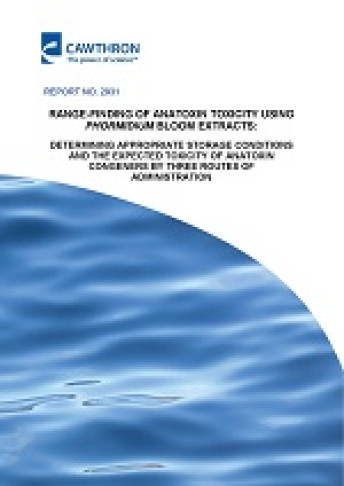Phormidium (now called Microcoleus) is a cyanobacterium (toxic algae) that grows in some New Zealand rivers. It produces neurotoxins called anatoxins and ingestion of cyanobacteria mats has caused numerous dog deaths. In order to manage Phormidium in our rivers, we need more knowledge on the toxicity of these anatoxins (i.e., the amount of toxin that needs to be ingested to cause harm). Preliminary investigations were undertaken to assess the feasibility of conducting an acute (short-term) toxicity study using purified anatoxins. A method to stabilise the anatoxins following purification was devised and experiments were conducted to determine how much anatoxin material would need to be purified. The results of this work showed that anatoxins were stable in acidic solutions (for a sufficient period of time to conduct the toxicity study) and that sufficient anatoxins could be purified for the planned toxicity experiments.
Phormidium (now called Microcoleus) is a cyanobacterium (toxic algae) that grows in some New Zealand rivers. It produces neurotoxins called anatoxins and ingestion of cyanobacteria mats has caused numerous dog deaths. In order to manage Phormidium in our rivers, we need more knowledge on the toxicity of these anatoxins (i.e., the amount of toxin that needs to be ingested to cause harm). Preliminary investigations were undertaken to assess the feasibility of conducting an acute (short-term) toxicity study using purified anatoxins. A method to stabilise the anatoxins following purification was devised and experiments were conducted to determine how much anatoxin material would need to be purified. The results of this work showed that anatoxins were stable in acidic solutions (for a sufficient period of time to conduct the toxicity study) and that sufficient anatoxins could be purified for the planned toxicity experiments.
